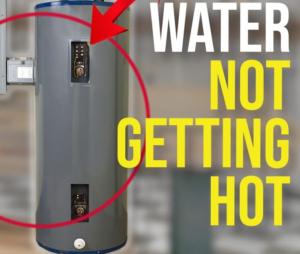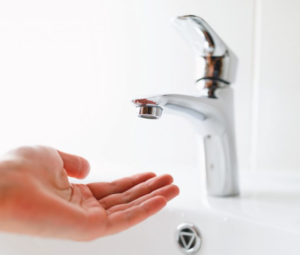A slow drain might seem like a minor inconvenience at first—a little water standing in the sink longer than usual or the shower taking a bit more time to empty. However, ignoring a slow drain can lead to serious plumbing system issues that require major repairs. Let’s explore why this seemingly small issue shouldn’t be overlooked and how it can escalate into costly problems for your home.
Understanding the Causes of Slow Drains
A slow drain can be caused by several factors, some of which may not be immediately obvious. Common culprits include:
- Hair buildup: Especially common in bathroom drains, hair can accumulate over time, forming blockages that slow the flow of water.
- Grease and food particles: Kitchen sinks are notorious for developing clogged drains due to grease, fats, and food particles that accumulate in the pipes.
- Soap scum: Over time, soap residue can combine with minerals in the water to create a sticky substance that causes drain blockage.
- Foreign objects: Small objects like toothpaste caps, toys, or pieces of plastic can accidentally end up in drains and lead to drain cleaning issues.
- Mineral buildup: Homes with hard water are especially prone to slow drains because of mineral deposits that form inside the pipes.
- Tree roots: In some cases, slow drains can indicate a more serious issue such as tree roots in pipes, which require professional attention.
Each of these factors contributes to a gradual buildup that narrows the pipes, reducing the flow of water. But while a slow drain might not seem urgent, it’s a warning sign that something is wrong with your plumbing system.
How Slow Drains Escalate to Major Problems
When a slow drain is left unaddressed, the problem doesn’t go away—it gets worse. Here’s how:
- Complete blockages: The most common consequence of ignoring a slow drain is that it eventually turns into a fully clogged drain. What starts as a minor inconvenience can turn into a significant problem when water can no longer flow through the pipes at all.
- Pipe corrosion: As debris builds up inside the pipes, it can lead to corrosion over time. Corroded pipes are prone to pipe leaks and cracks, which can cause water damage to your home.
- Increased pressure on pipes: A slow drain causes water to back up, which puts additional pressure on your plumbing system. Over time, this pressure can lead to pipe leaks or even burst pipes.
- Sewage backups: If the slow drain is in your toilet or sewer line, ignoring it can result in a sewage backup. This not only leads to unpleasant odors and unsanitary conditions but can also require expensive repairs to clean up the mess and fix the damaged pipes.
- Mold and mildew growth: Stagnant water in your sinks, showers, or bathtubs can create a breeding ground for mold growth. This can pose a health risk to you and your family, especially for individuals with allergies or respiratory issues.
- Damage to floors and walls: If the water from a slow drain backs up and overflows, it can cause significant water damage to floors, walls, and cabinets. Over time, this can lead to rot and the need for costly repairs.
The Financial Implications of Ignoring a Slow Drain
The longer you ignore a slow drain, the more expensive the repairs will be. A simple drain cleaning might cost between $100 and $200, but if the problem progresses to pipe corrosion, pipe leaks, or a burst pipe, the repair costs can skyrocket to thousands of dollars. Here’s a breakdown of potential costs.
As you can see, ignoring a slow drain can lead to serious financial consequences, especially if the problem progresses to something more severe, such as a blocked sewer line or extensive water damage.
Preventative Measures You Can Take
The best way to avoid costly repairs is to address a slow drain as soon as you notice it. Here are a few preventative measures you can take:
- Use drain guards: Install drain guards in your sinks, showers, and tubs to catch hair, food particles, and other debris before they enter the pipes.
- Dispose of grease properly: Never pour grease, fats, or oils down the drain. Instead, collect them in a container and dispose of them in the trash.
- Run hot water: After using the kitchen sink, run hot water for a few minutes to help wash away any grease or food particles that might be sticking to the pipes.
- Regular drain cleaning: Consider having your drains professionally cleaned once a year to remove any buildup before it becomes a major problem.
- Avoid chemical drain cleaners: While it might be tempting to use a chemical drain cleaner to fix a slow drain, these products can damage your pipes over time. Instead, opt for natural solutions like baking soda and vinegar or call a professional plumber.
- Inspect pipes for leaks: Regularly inspect your pipes for any signs of pipe leaks or corrosion, and address any issues promptly before they escalate.
When to Call a Professional Plumber
While DIY fixes like using a plunger or drain snake can sometimes resolve a slow drain, there are times when it’s best to call a professional plumber. Here are a few situations where you should seek expert help:
- Multiple slow drains: If more than one drain in your home is slow, it could indicate a problem with your sewer line, which requires professional attention.
- Recurring slow drains: If your drain clogs frequently despite regular drain cleaning, there may be a more serious issue that needs to be addressed by a plumber.
- Unpleasant odors: If you notice foul smells coming from your drains, it could be a sign of a sewer line issue or a buildup of bacteria inside the pipes.
- Gurgling sounds: If your drains make gurgling or bubbling sounds, it could indicate a blockage in the main sewer line, which a professional should inspect.
Conclusion
A slow drain may seem minor, but it can quickly escalate into a major plumbing system issue if left unaddressed. From complete blockages and pipe corrosion to water damage and mold growth, the consequences of ignoring a slow drain can be costly. By taking preventative measures and addressing slow drains early, you can avoid expensive repairs and keep your plumbing system in good working order. When in doubt, don’t hesitate to call a professional plumber to assess and resolve the issue before it becomes a major problem.
FAQ
- Why is my drain slow, and should I be concerned?
Slow drains can be caused by a variety of issues, including hair, soap scum, grease buildup, or even tree roots invading your pipes. Ignoring this issue can lead to more significant blockages and potentially costly repairs. - What happens if I ignore a slow drain?
Ignoring a slow drain allows debris to accumulate, which can result in complete clogs, pipe damage, unpleasant odors, and even flooding. Over time, this can lead to major plumbing issues that require extensive repairs. - Can a slow drain cause damage to my plumbing system?
Yes, a slow drain can cause pressure to build up within your pipes, leading to leaks, cracks, or pipe bursts, all of which may require expensive repairs or replacements. - What are the early warning signs of a drain problem?
Early signs include water pooling around the drain, unpleasant odors, gurgling sounds from the pipes, and slow water drainage. Addressing these signs early can prevent bigger issues. - How long can I wait before addressing a slow drain?
It’s best to address a slow drain as soon as you notice the issue. The longer you wait, the more the problem may worsen, increasing the likelihood of costly repairs or even water damage to your home. - Can a slow drain lead to mold or mildew problems?
Yes, a slow drain can cause water to stagnate, creating a damp environment that encourages the growth of mold and mildew. This can lead to health risks and further property damage. - What can I do to fix a slow drain before it leads to major repairs?
Simple fixes like using a plunger, drain snake, or cleaning products designed to break down blockages can sometimes help. However, if these methods fail, it’s important to call a plumber to prevent more severe damage. - When should I call a professional for a slow drain?
If home remedies don’t work, or if the slow drain is a recurring issue, it’s best to call a professional plumber. They can diagnose the root cause and prevent further damage to your plumbing system. - How can I prevent slow drains in the future?
Regular maintenance, such as cleaning your drains with safe drain cleaners, avoiding pouring grease or large debris down the drain, and installing drain covers, can help prevent slow drains and larger issues. - Is it expensive to repair damage caused by a slow drain?
The cost of repairs can vary depending on the severity of the damage. Ignoring the issue can result in significant expenses if you need to replace pipes, repair water damage, or remove mold. Addressing the problem early is more cost-effective.





